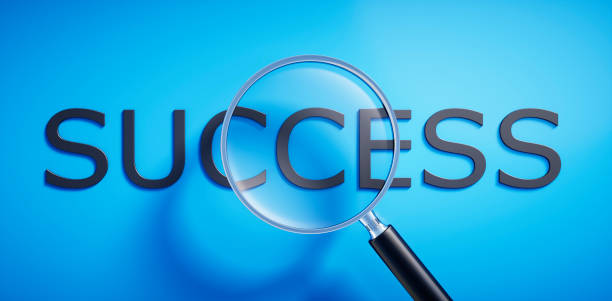What is Technical SEO and Why Does It Matter?

What is Technical SEO and Why Does It Matter?
#TechnicalSEO refers to the set of actions taken to optimize the infrastructure and structure of a website so that search engines like Google can easily crawl, index, and rank the site.
Unlike On-Page SEO, which focuses on the content of the site, technical SEO focuses on the technical aspects.
The importance of technical SEO lies in the fact that if the site has technical problems, even the best content cannot achieve a good ranking in search results.
Technical SEO is the foundation of #SEO, and without it, other SEO efforts will not achieve the desired result.
For example, if the site loading speed is slow, Google’s robots cannot quickly crawl the site’s pages, and as a result, indexing the pages becomes problematic.
Also, if the site has security issues, it may be penalized by Google and lose its ranking.
SEO includes optimizing the site structure, increasing loading speed, improving user experience, fixing crawl and index errors, creating a sitemap and robots.txt file, and many other things.
By performing technical SEO correctly, you can ensure that the site is optimized in the best possible way for search engines and increase the chance of achieving a higher ranking in search results.
You can learn more about technical SEO here.
In short, technical SEO is a long-term investment that helps improve site visibility and increase organic traffic.
Did you know that 85% of customers check your company’s website before any interaction?
Build a corporate website worthy of your reputation with Rasaweb.
✅ Increase customer credibility and trust
✅ Attract high-quality leads
⚡ Get a free website design consultation
The Most Important Technical SEO Factors in 2024

The Most Important Technical SEO Factors in 2024
In 2024, several factors affect technical SEO, but some of the most important include:
- Site Loading Speed Site loading speed is one of Google’s most important ranking factors.
Users expect sites to load quickly, and if a site is slow, users are likely to leave it. - Mobile-Friendliness Given the increased use of mobile devices, Google gives more importance to sites that are optimized for mobile.
The site must be responsive and display correctly on different devices. - Site Security (HTTPS) Using the HTTPS protocol is essential for site security.
Google gives a better ranking to sites that use HTTPS. - URL Structure The URL structure should be simple and understandable.
URLs should include keywords related to the page content. - Sitemap A sitemap helps Google easily find and index the site’s pages.
- Robots.txt File The Robots.txt file tells Google which pages of the site should not be crawled.
- Structured Data (Schema Markup) Using structured data helps Google better understand the content of the site’s pages.
These factors are only part of technical SEO, but paying attention to them can have a significant impact on the site’s ranking.
To improve the technical SEO of the site, you must constantly check the site’s performance and fix problems.
You can use this link for more information
Optimizing Site Loading Speed: Solutions and Tools

Optimizing Site Loading Speed: Solutions and Tools
Site loading speed is one of the most important factors in user experience and Google ranking.
A slow site can lead to reduced traffic, increased bounce rate, and reduced sales.
To optimize site loading speed, the following solutions can be used:
- Optimize Images Reduce the size of images and use appropriate formats such as WebP.
- Compress Files Compress CSS and JavaScript files.
- Use Caching Use browser and server caching.
- Reduce HTTP Requests Reduce the number of HTTP requests by combining files and using CSS sprites.
- Use CDN Use a Content Delivery Network (CDN) to distribute site content across different servers.
There are various tools to measure and improve site loading speed, including:
- Google PageSpeed Insights This free tool from Google helps you measure your site’s loading speed and receive optimization suggestions.
- GTmetrix GTmetrix is another tool that provides detailed information about site loading speed.
By using these solutions and tools, the site loading speed can be significantly improved and the user experience can be enhanced.
SEO is different for different sites.
| Tool | Description |
|---|---|
| Google PageSpeed Insights | Provides suggestions for improving loading speed |
| GTmetrix | Detailed analysis of loading speed |
Optimization for Mobile: Responsive and AMP

Optimization for Mobile: Responsive and AMP
Given the increased use of mobile devices, optimizing the site for mobile is very important.
Google gives a better ranking to sites that are optimized for mobile.
There are two main ways to optimize the site for mobile: Responsive and AMP (Accelerated Mobile Pages).
Responsive means that the site automatically adapts to the screen size of the user’s device.
This method is the simplest and most common way to optimize the site for mobile.
To create a responsive site, you need to use CSS media queries.
AMP is an open-source framework designed to create fast and lightweight pages for mobile.
AMP pages load much faster than regular pages and provide a better user experience.
However, implementing AMP is more complex than responsive and has limitations in design and functionality.
SEO and optimization is one of the most important tasks at the moment.
The choice between responsive and AMP depends on your needs and goals.
If you are looking for a simple and quick solution, responsive is a good option.
But if you are looking to provide the best possible user experience for mobile users and can cope with the limitations of AMP, AMP is a better option.
You can learn about AMP here.
Did you know that your company’s website is the first point of contact for 75% of potential customers?
Your website is the face of your brand. With Rasaweb’s corporate website design services, build an online presence that earns customer trust.
✅ Create a professional and lasting image of your brand
✅ Attract target customers and increase online credibility
⚡ Get a free consultation from Rasaweb experts!
Proper URL Structure: A Guide to Creating SEO-Friendly URLs

Proper URL Structure: A Guide to Creating SEO-Friendly URLs
The URL structure plays an important role in site SEO.
SEO-friendly URLs should be simple, understandable, and include keywords related to the page content.
Here are some tips for creating SEO-friendly URLs:
- Use Keywords URLs should include keywords related to the page content.
- Keep URLs Short Short URLs are easier to read and remember.
- Use hyphens (-) instead of underscores (_) Google recognizes hyphens as word separators in URLs, while it ignores underscores.
- Use lowercase letters Using lowercase letters in URLs is recommended.
- Avoid special characters Avoid using special characters in URLs.
- Keep the URL structure logical The URL structure should be logical and hierarchical.
For example, instead of using the following non-SEO-friendly URL:
www.example.com/page?id=123
Use the following SEO-friendly URL:
www.example.com/blog/seo-friendly-url
By following these tips, you can create SEO-friendly URLs and help improve your site’s ranking in search results.
Site SEO helps us have a better ranking.
Sitemap and Robots.txt: A Comprehensive Guide

Sitemap and Robots.txt: A Comprehensive Guide
Sitemap is an XML file that contains a list of all important pages of your site.
A sitemap helps search engines like Bing easily find and index your site’s pages.
Creating a sitemap is very important for large and complex sites that have a large number of pages.
High-speed SEO can help a lot.
Robots.txt file is a text file that tells search engines which pages of your site should not be crawled.
This file is used to prevent crawling unnecessary or confidential pages of the site.
Important Notes About Sitemap
- The sitemap should be updated regularly.
- The sitemap should be introduced in the robots.txt file.
- The sitemap should be registered in Google Search Console.
Important Notes About Robots.txt File
- The Robots.txt file should be placed in the root of the site.
- The Robots.txt file should be configured correctly to prevent crawling important pages of the site.
By using a sitemap and Robots.txt file, you can help search engines crawl and index your site more effectively.
Take SEO seriously.
Structured Data (Schema Markup): Enhancing Search Engine Understanding

Structured Data (Schema Markup): Enhancing Search Engine Understanding
Structured Data (Schema Markup) is an HTML code that helps search engines better understand the content of your site’s pages.
By using structured data, you can provide search engines with additional information about the content of your pages, such as content type, author, publication date, ranking, etc.
Solutions can also be used in external SEO.
Using structured data can help improve the display of your site in search results.
For example, if your site is a recipe, you can use structured data to display information such as cooking time, ingredients, and recipe rating in search results.
This can lead to increased click-through rate (CTR) and attract more traffic to your site.
SEO can help you a lot in this regard.
There are different types of structured data that you can use for different types of content.
Some of the most common types of structured data include:
- Article For articles
- Recipe For recipes
- Product For products
- Event For events
- LocalBusiness For local businesses
| Data Type | Description |
|---|---|
| Article | To specify news and blog articles |
| Recipe | To specify a recipe |
| Product | To specify the specifications of store products |
By using structured data, you can help search engines better understand the content of your site’s pages and improve the display of your site in search results.
You can see examples of structured data codes from this link
Fixing Crawl and Index Errors: A Troubleshooting Guide

Fixing Crawl and Index Errors: A Troubleshooting Guide
Crawl and index errors can prevent search engines from indexing your site’s pages and reduce your site’s ranking.
To identify and fix these errors, you should regularly check the Google Search Console.
Some of the most common crawl and index errors include:
- Error 404 (Page Not Found) This error occurs when a page does not exist on your site.
- Error 500 (Server Error) This error occurs when there is a problem with your site’s server.
- Incorrect Redirects Redirects must be configured correctly so that users and search engines are directed to the correct page.
- Duplicate Pages Having duplicate pages can confuse search engines.
- Low-Value Content Pages with low-value content may not be indexed by search engines.
To fix these errors, you must first identify their cause and then apply the appropriate solution.
For example, to fix error 404, you must create the page or create a 301 redirect to the new page.
SEO helps you solve your site’s problems.
Does your current corporate website present a worthy image of your brand and attract new customers?
If not, turn this challenge into an opportunity with Rasaweb’s professional corporate website design services.
✅ Significantly improves the credibility and image of your brand.
✅ Smooths the path to attracting new leads and customers for you.
⚡ Contact Rasaweb now to receive a free and specialized consultation!
The Importance of Internal Linking in Technical SEO

The Importance of Internal Linking in Technical SEO
Internal linking refers to creating links between different pages of a website.
This not only helps users easily navigate your site, but is also very important for search engines.
Internal linking helps search engines better understand your site’s structure and recognize the importance of different pages.
With proper and strong SEO, you can help improve your site’s ranking.
Benefits of Internal Linking
- Improved Crawling and Indexing Internal linking helps search engines crawl and index more pages of your site.
- Increased Ranking Internal linking can help increase the ranking of important pages of your site in search results.
- Improved User Experience Internal linking helps users easily navigate your site and find the information they need.
- Increased Time on Site With internal linking, users stay on your site longer and visit more pages.
Important Notes on Internal Linking
- Use relevant anchor text.
- Link to important pages of the site.
- Do not use nofollow links for internal links (except in special cases).
- Avoid broken links.
By following these tips, you can optimize your site’s internal linking and help improve your site’s ranking in search results.
Use SEO correctly and in its proper place.
Monitoring and Continuously Improving Technical SEO

Monitoring and Continuously Improving Technical SEO
Technical SEO is an ongoing process and should not be considered a one-time task.
To maintain and improve your site’s ranking in search results, you should regularly monitor your site’s technical SEO performance and make the necessary changes.
SEO is one of the most important principles of any site.
Technical SEO Monitoring Tools
- Google Search Console This free tool from Google provides valuable information about your site’s performance in search results, including crawl errors, index problems, searched keywords, etc.
- Google Analytics This free tool helps you analyze your site’s traffic and understand user behavior on your site.
- SEO Tools SEO tools such as SEMrush, Ahrefs, and Moz provide comprehensive information about your site’s SEO, including keyword ranking, inbound links, competitors, etc.
Important Notes on Technical SEO Monitoring
- Regularly check Google Search Console and fix crawl and index errors.
- Analyze your site’s traffic in Google Analytics and understand user behavior patterns.
- Monitor your keyword ranking in SEO tools and adjust your strategy accordingly.
- Check your site’s performance on mobile and fix problems.
- Regularly measure your site’s loading speed and make the necessary improvements.
By monitoring and continuously improving technical SEO, you can maintain your site’s ranking in search results and attract more organic traffic.
Don’t neglect the important principles of SEO.
Frequently Asked Questions
| Question | Answer |
|---|---|
| What is SEO? | SEO, or Search Engine Optimization, is a process to increase the quality and quantity of website traffic by improving the site’s ranking in the natural (organic) results of search engines such as Google. |
| What are the main types of SEO? | SEO is divided into three main categories: On-Page SEO, Off-Page SEO, and Technical SEO. |
| What does On-Page SEO include? | On-Page SEO includes optimizing elements within the website, such as keywords, Title Tag, Meta Description, content, URL structure, images, and internal links. |
| What is Off-Page SEO? | Off-Page SEO refers to activities outside the website that help improve its ranking, such as Backlink Building, social media marketing, and Brand Mentions. |
| What is Technical SEO? | Technical SEO focuses on optimizing the technical aspects of the website to help search engines crawl and index it better. This includes site speed, mobile-friendliness, site structure, Sitemaps, and Robots.txt files. |
| What role do Keywords play in SEO? | Keywords are phrases that users enter into search engines. The correct and targeted use of relevant keywords in the content and elements of the site helps search engines understand the topic of your page and display it to related searches. |
| What is a Backlink and why is it important? | A backlink, or inbound link, is a link from one website to another. Backlinks act as a “vote of confidence” from other sites for search engines and play an important role in the credibility and ranking of the site, especially if they are from reputable sites. |
| What effect does quality content have on SEO? | Quality, relevant, comprehensive, and unique content not only attracts and retains users but also shows search engines that your page is valuable. This helps improve ranking, reduce Bounce Rate, and increase the time a user spends on the site. |
| Why is site loading speed important for SEO? | Site loading speed is an important ranking factor for Google. Faster sites provide a better user experience, have a lower bounce rate, and are preferred by search engines. |
| Is SEO a one-time process? | No, SEO is an ongoing and long-term process. Search engine algorithms are constantly changing, competition is increasing, and the content of the site also needs to be updated. Therefore, SEO requires continuous monitoring, analysis, and optimization. |
And other services of Rasa Web Advertising Agency in the field of advertising
Smart Direct Marketing: An effective tool for attracting customers with the help of Google Ads management.
Smart UI/UX: A new service to increase user engagement through a SEO-focused content strategy.
Smart Reportage: A creative platform to improve customer acquisition with marketing automation.
Smart Advertising Campaign: Designed for businesses looking to build a digital brand through user experience customization.
Smart UI/UX: A combination of creativity and technology to increase click-through rates by precisely targeting the audience.
And more than hundreds of other services in the field of internet advertising, advertising consulting, and organizational solutions.
Internet Advertising | Advertising Strategy | Reportage Ad
Sources
Complete list of technical SEO checklist
,Technical SEO training video Aparat
,What is Technical SEO? Step-by-step SEO Technical Training
,Complete Technical SEO Guide: Techniques to Increase Website Traffic
? Transform your business in the digital world with Rasaweb Afrin. From secure and professional website design to targeted SEO and content marketing, we offer comprehensive solutions for your success.
📍 Tehran, Mirdamad Street, next to the Central Bank, South Kazerun Alley, Ramin Alley No. 6



